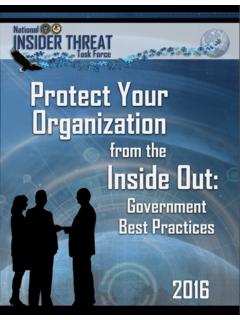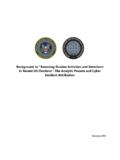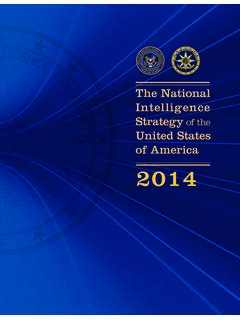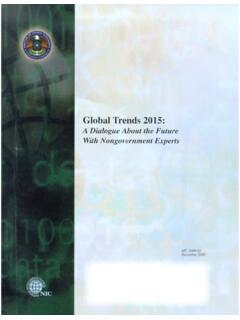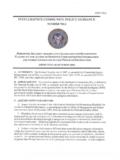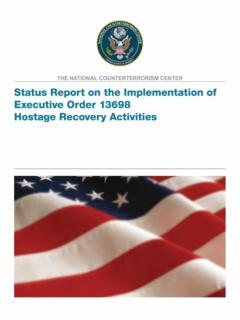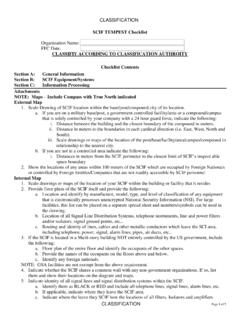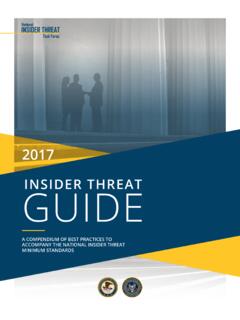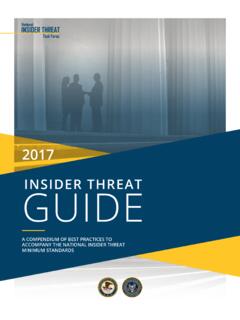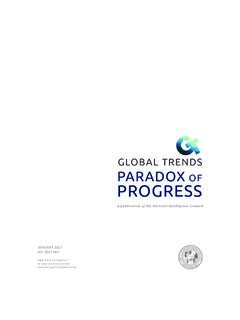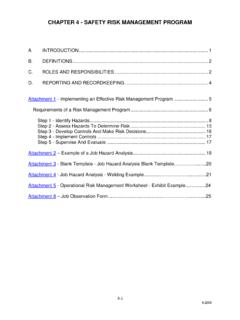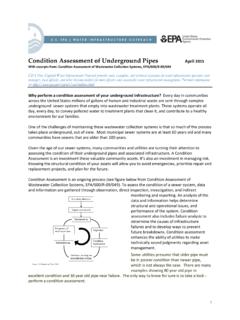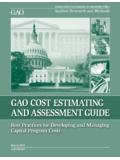Transcription of A Corporate Counterintelligence Guide - DNI
1 Counterintelligence . O F F I C E O F T H E N A T I O N A L C O U N T E R I N T E L L I G E N C E E X E C U T I V E. Protecting Key Assets: A Corporate Counterintelligence Guide Counterintelligence for the Private Sector Where the Money When Security is Not ..3. step One: Conducting a Counterintelligence Risk A. Identifying and Prioritizing B. Determining ..4. C. Assessing ..4. step Two: Laying the Groundwork for a Corporate CI ..5. step Three: Identifying the Capabilities step Four: Implementing a Corporate CI Program Maintaining an Effective Corporate CI ..10. 1. PROTECTING KEY ASSETS: A Corporate Counterintelligence Guide |. Introduction A disturbing trend has developed in which foreign intelligence services, non-state actors, and criminals are using intelligence collection techniques against American companies to steal valuable trade secrets and assets. This activity can bankrupt a company by compromising years of costly research and development, weaken the economy, and threaten national security.
2 According to the FBI, the cost to industry is tens of billions of dollars each year. Corporate boards and executive officers must understand the true threat their companies face. It is one that has evolved beyond the stage where information security, as one example, can simply be delegated to the security office or CIO - it requires full executive engagement. With the tools available to economic spies, the American private sector is more vulnerable than ever. Not too long ago, traditional Corporate espionage was dangerous. It required the Corporate spy to betray one's coworkers, clandestinely collect company documents, load and mark dead drops, and operate under the constant risk of exposure and arrest. Yet Corporate espionage, like so many activities, has moved into the realm of cyberspace. In cyberspace, many American companies are left working in the modern equivalent of the Wild West, an unregulated frontier where the crown jewels of the corporation - trade secrets and intellectual property - are hijacked every day, often without the victim's knowledge.
3 In turn, America often finds itself competing with the very developments and technologies our companies pioneered. Companies must have aggressive security programs to protect their intellectual property, trade secrets, business processes, strategic goals, and the integrity of their brands. This Guide outlines the steps involved in building a Corporate Counterintelligence (CI) program to complement your company's security program and respond to the intelligence collection techniques used by today's spies. An effective CI program will ensure that your company has identified its most vulnerable assets, understands the threats to those assets, has discovered the vulnerabilities that might make your company susceptible to exploitation, and has taken the appropriate steps to mitigate risks . Unlike many of our most active competitors who engage in cyber espionage, the United States does not have a centralized industrial policy - nor should it. Our long-standing prosperity is a reflection of the free market.
4 That places a large responsibility on the shoulders of American CEOs. The Government will share threat and warning information to the full extent of the law, but to protect our economy and our position on the global stage, much of our national security will have to move from the war room to the board room. Sensitive US economic information and technology are targeted by the intelligence services, private sector companies, academic and research institutions, and citizens of dozens of countries.. - ONCIX Report to Congress on Foreign Economic Collection and Industrial Espionage 2. PROTECTING KEY ASSETS: A Corporate Counterintelligence Guide |. Where the money is: Transformation in Corporate Asset Values Creates Economic Vulnerability The economy has changed over the past 20 years. Intellectual capital rather than physical assets now represent the bulk of a corporation's value. Research by Ocean Tomo Intellectual Capital Equity that is captured in the chart below shows the transition from an economy of tangible assets (real estate, hardware, vehicles) to one in which intangible assets (patented technology, trade secrets, proprietary data, business process and marketing plans) now represent 81 percent of the value associated with the S&P 500.
5 This shift has made Corporate assets far more susceptible to espionage. Simon Hunt, Vice President and Chief Technology Officer of McAfee, said in a 2011 report titled Underground Economies that: Criminals understand that there is much greater value in selling a company's proprietary information to competitors and foreign governments .. the cyber underground economy has shifted its focus to the theft of Corporate intellectual capital.. Composition of the S&P 500. Source: Ocean Tomo Intellectual Capital Equity. 3. PROTECTING KEY ASSETS: A Corporate Counterintelligence Guide |. When Security is Not Enough When companies become targets of competitors, foreign intelligence services, and criminal elements, even aggressive security programs may not be enough. A CI risk assessment (described later in this Guide ) can help determine the threat of espionage activity against your company and the size and scope of the CI program or capabilities that are needed to address this threat.
6 Counterintelligence and security are distinct but complementary disciplines, and it is important for organizations contemplating the establishment of a CI program to understand the difference. Every corporation in America needs an effective physical security capability that ensures employees, facilities, and information systems are protected. Security, at its root, is defensive. Counterintelligence is both defensive and proactive, and it incorporates unique analysis and investigation activities designed to anticipate, counter, and prevent an adversary's actions, protecting company resources and innovation. Counterintelligence and security programs create a continuum of effective protection for your company. step One Conducting a Counterintelligence Risk assessment Identifying and Determining Assessing Protection Prioritizing Threats Vulnerabilities Costs vs. Loss Assets Consequences The decision to create Corporate CI programs and practices will be based on concerns that your company and its assets are a target of foreign intelligence services, criminals, economic competitors, and private spies-for- hire.
7 Therefore, the first step in establishing a CI program is to conduct a risk assessment that evaluates the threat to your company by examining available threat information, assessing your organization's vulnerabilities, and gauging the consequences of losing critical assets. A senior executive or board member of your company should oversee the CI risk assessment process from start to finish, drawing on both in-house experts and outside expertise in CI analysis, operations, and investigations to complete the assessment . A risk assessment will help determine the capabilities and resources that will be required to run an effective CI program. 4. PROTECTING KEY ASSETS: A Corporate Counterintelligence Guide |. While companies will need to tailor CI risk assessments to their unique circumstances, all assessments require three important actions: A. Identifying and Prioritizing Assets Your company should identify and prioritize its most critical assets, to include people, groups, relationships, instruments, installations, processes, and supplies.
8 The loss or compromise of these assets would be the most damaging to your organization, could result in substantial economic losses, or could harm national security. Collaboration with industry partners and Federal agencies that have oversight or regulatory responsibilities in your business sector can provide a fuller picture that will assist your company with this prioritization process. Your company's management will have to make the final assessment of those assets most worthy of protection. B. Determining Threats Next, your company will need to assess the capabilities, intentions, and opportunity of potential adversaries to exploit or damage company assets or information. You also should determine if there are any gaps in an ad- versary's knowledge of the company or if your company is working on a particular technology or product that an adversary may be trying to acquire. Company executives should seek the assistance of Counterintelligence professionals and establish relationships with Federal agencies to make use of existing threat reporting for this part of the assessment .
9 C. Assessing Vulnerabilities Finally, your company will need to assess the inherent susceptibility of its procedures, facilities, information systems, equipment, or policies to an attack. You will need to determine how an adversary, including a mali- cious insider, would attempt to gain access to your critical assets. When assessing vulnerabilities, a company should consider the physical location of its assets and who has access to them, including both employees and outsiders. Companies should identify any systemic or institutional vulnerabilities. Situations in which employees are dis- persed geographically including at overseas locations or have access to or are involved in sensitive systems or projects deserve extra scrutiny. 5. PROTECTING KEY ASSETS: A Corporate Counterintelligence Guide |. step Two Laying the Groundwork for a Corporate CI Program The risk assessment will provide a better understanding of the scope and nature of the threats to your company's most important assets.
10 At this point, a number of initial activities should be considered that will lay the groundwork for building an effective CI program. To prepare for implementation, your company should: Assign or hire a program manager who is dedicated to the CI program and has direct access to the CEO or senior partners so that CI and security issues can be addressed expeditiously, discreetly, and with appropriate authority. Establish that the CI program will have a centralized management structure but will support the entire corporation, regardless of location. Take steps to begin or continue strengthening strong relationships among the company's security, information assurance (IA), general counsel, and human resources (HR) departments; these relationships are critical to effective CI. Develop liaison relationships with relevant Government law enforcement and Intelligence Community agencies to ensure effective two-way communication on CI issues of concern to both the corporation and the Government.
